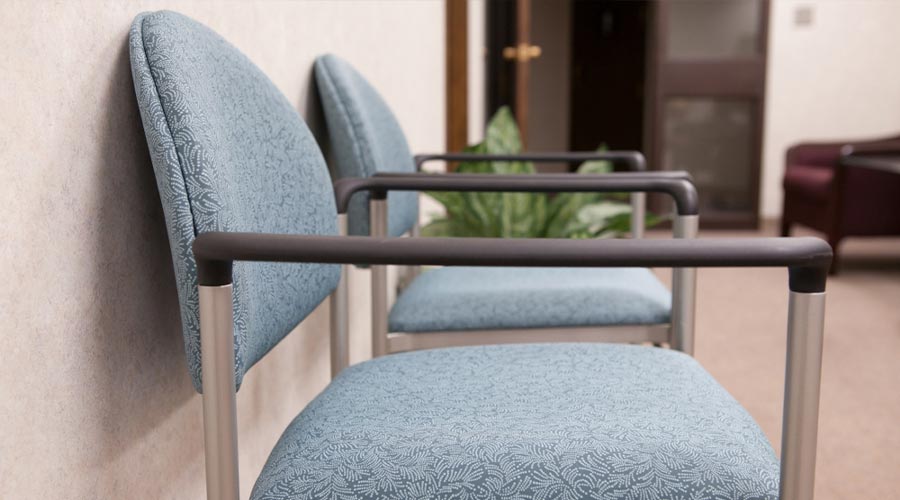
When hospitals and other healthcare facilities needed help sourcing durable coated fabric for patient chairs, public area guest chairs, task chairs, sofas, and recliners, the Chemical Fabrics & Film Association – Performance Products Division was there. The association created a new, identifiable standard to help designers, specifiers, and facility managers select materials compatible with newer, more stringent cleaning protocols.
During the COVID-19 pandemic, some coated fabrics used to upholster furniture in healthcare settings suffered premature product failure years before the expected service life due to the increased use of strong disinfectants. A number of healthcare facilities had deselected vinyl coated fabrics, switching to polyurethane products, many of which failed, leading to millions of dollars in losses. Facility managers soon came to recognize the value of vinyl coated fabrics in performance, aesthetics (print, emboss, haptics), and economics. In turn, the vinyl industry developed more disinfectant-resistant topcoats to withstand modern disinfecting protocols.
Facility managers began experiencing increased instances of cracking, color transfer, stretching and puddling, stickiness and softening, fraying, and more. It became clear that the fabrics industry needed a method of identifying materials able to withstand modern cleaning protocols.
In response, the Chemical Fabrics & Film Association – Performance Products Division developed a performance standard for the healthcare environments to help prevent common product failures caused by incorrect selection.
Recommended Minimum Performance Standards for Vinyl Coated and Other Chemical Coated Upholstery Fabrics (CFFA-HC-201) provides manufacturers and distributors of coated fabrics with a certification mark to help specifiers, designers, and furniture manufacturers select appropriate coated fabrics for the healthcare environment. It requires that a coated fabric pass 16 tests to earn certification.
There are currently nearly 200 coated fabrics which have passed all 16 tests. While the standard cannot guarantee that a coated fabric will never fail, it provides significant information and assistance to help designers make informed selections.

 The Down and Dirty on Cleaning in Virus Season
The Down and Dirty on Cleaning in Virus Season How Surfactant Use is Expanding in Commercial Cleaning
How Surfactant Use is Expanding in Commercial Cleaning Maximize Your Margins: Learn How to Automate Pricing and Track Rebates
Maximize Your Margins: Learn How to Automate Pricing and Track Rebates